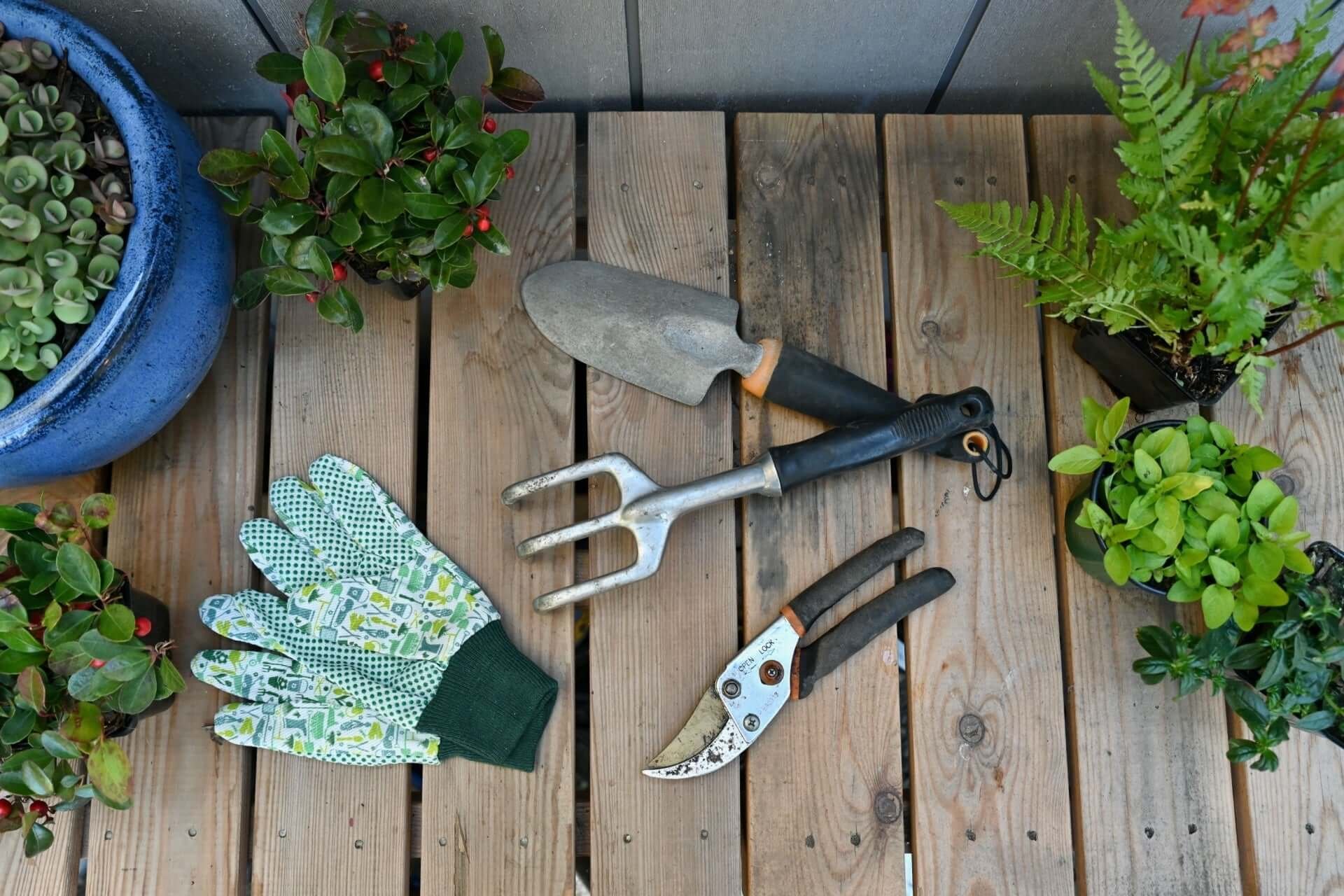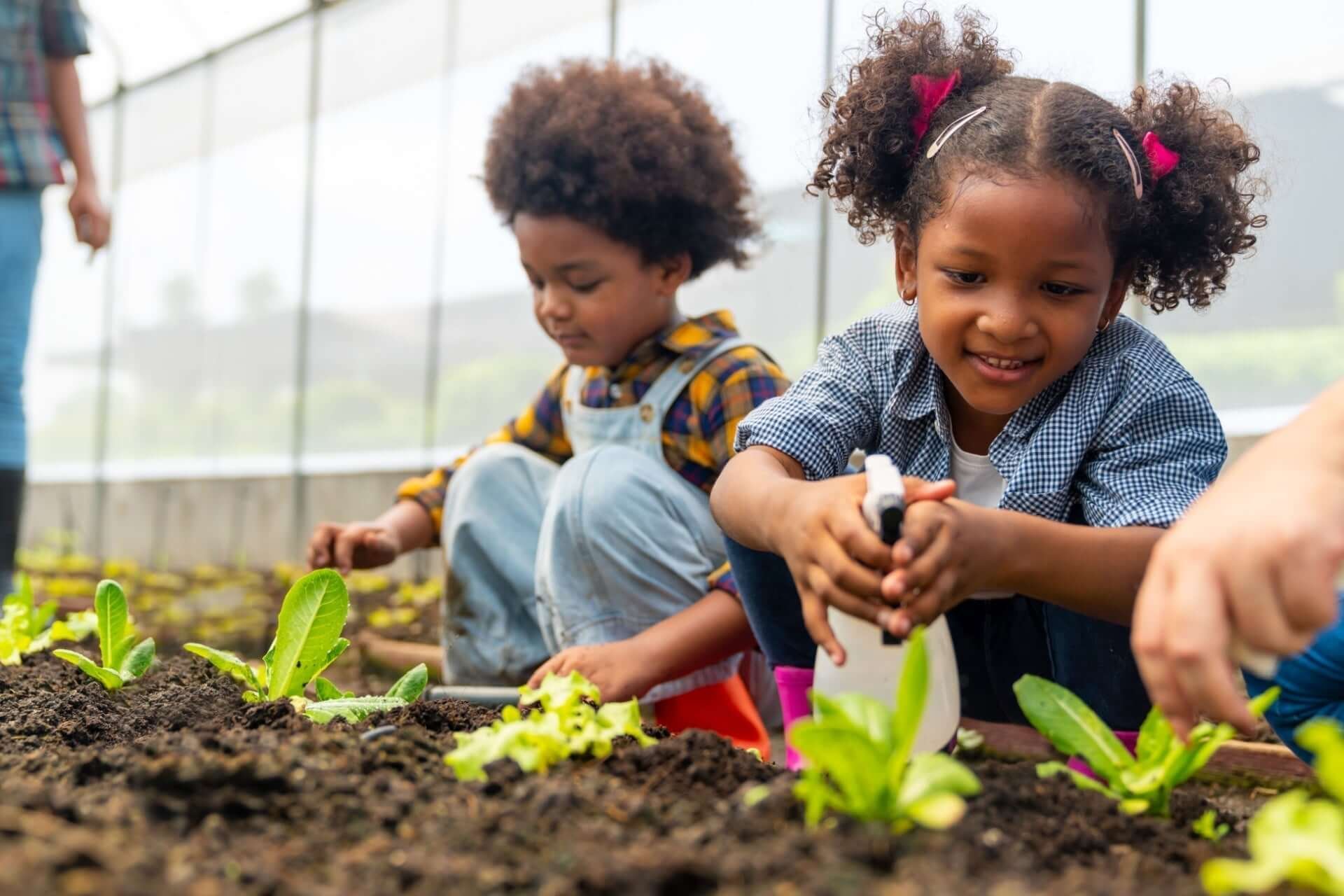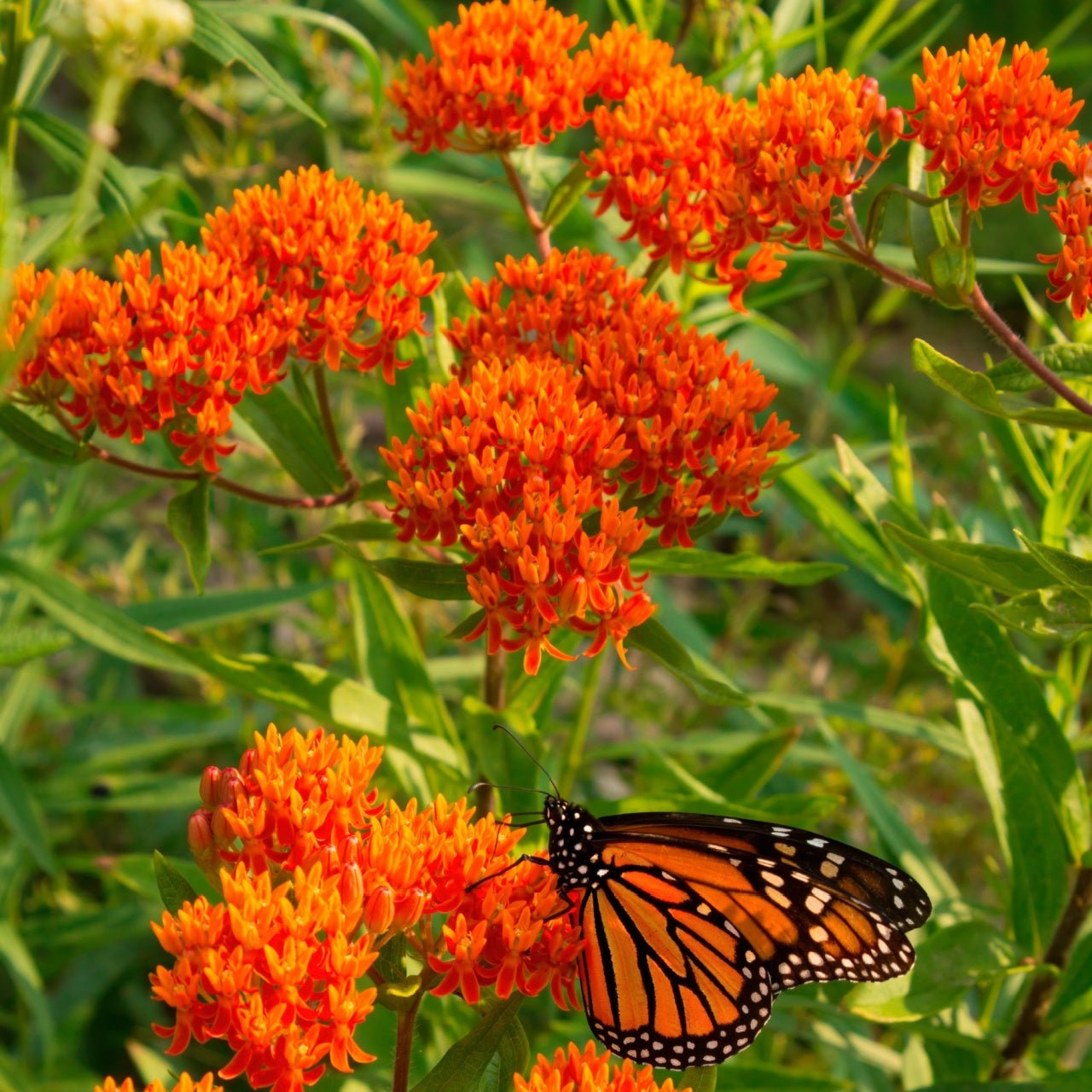Gardening with children gives them a fun activity that can lead to a lifelong hobby. It also helps kids appreciate where fruits and vegetables come from. Research has shown kids are more willing to eat vegetables they have grown and harvested than store bought vegetables. To make sure your child has a fun gardening experience, follow these tips.
Preparing to Garden
Before you garden with children, set them up for success.
Safety Warning
Remind children not to eat anything or put it in their mouth unless you or another adult says it is safe. Children will put bugs, plants, and anything else they find in their mouth unless they are reminded not to. Know where the first aid kit is and check it regularly to make sure it is fully stocked. Have the child wash their hands before they go out into the garden, especially if you are harvesting vegetables. If you have a pond or water feature remind the child to stay out of it. Keep a close eye on your child so they do not fall into the water.
Proper Clothing
Dress the child in close toed shoes and clothes appropriate for the weather. Many parents give the child one or two sets of ”gardening clothes” that are only worn to garden in, then changed out of when they come back inside. The child looks forward to gardening and will readily wear the proper clothes and shoes to do so. Garden gloves protect from blisters, thorns, and other unpleasant things, so make sure your child wears them. Don’t forget the sunscreen, sunglasses, and insect repellent.
Proper Tools
Make sure your tools are clean and in working order. Youi may want to buy child sized tools so the child can use them more easily than adult sized tools. Power tools should be used by adults. If you have to shout when using a tool, it is loud enough that you and the child should wear ear protection. Sunglasses can double as safety glasses if they cover the eyes on the front and sides.
Heat Precautions
If you live where it is hot, try gardening early in the morning and late in the evening when it is cooler. Keep an eye on your child to make sure they do not get too hot. Have them drink water frequently to keep them from dehydrating. Children are more susceptible to heat related illnesses than adults, so you may be fine when the child is suffering. Remember that a greenhouse may be 20-40 degrees hotter than the outside air temperature. Don’t let your children go into the greenhouse on a hot day.
Using Tools Safely
Tools are important parts of gardening but can be dangerous. Follow these tips to use them safely and allow your child to use them safely.
Power Tools
Children under 14 should not use power tools. They do not have the strength or dexterity to use them safely. Do a full safety briefing before letting a teenager use power tools. Remind them of the purpose of the tool, what they are going to use it for, and what safety precautions they need to follow. This may seem like overkill, but teenagers forget things, so need to be reminded.
Inspect Tools
Inspect your tools before each use. Teach your children how to inspect their tools. If a tool has a splintered handle, a dulled head or blade, worn teeth, or joint, remove the tool from use until it is repaired. Dull blades require more force to use. They are more likely to cut the user, too. Because they tear instead of slice, the ragged cut is harder for the plant to heal and puts it at risk of disease.
Clean Tools
Before you begin gardening each time, sterilize the tools with rubbing alcohol, then wipe dry. This prevents you from spreading diseases throughout the garden. As long as you dry the tools completely after rubbing them with alcohol, this will not hurt the tools.
Handle Tools Safely
Every tool has a sharp or dangerous side. Teach children to walk with the sharp points aimed at the ground. Never let a child threaten another human or animal with a tool. Tools are not toys.
Chemical Safety
Children should never handle chemicals. Chemicals should be locked away in a correctly ventilated area. Fertilizer can burn, pesticides can kill. Make sure children are kept well away from any area that has had chemicals used until the amount of time the label says they are safe has passed. This is usually until the chemical dries, but some chemicals require additional time to be safe. Keep pets away, too.
Harvesting and Storage
Picking fruit and vegetables is fun for kids. Let them help you harvest the things they have grown. Take the vegetables inside and prepare them for storage. Show the child how to cook each vegetable or when the vegetable can be eaten. Remind them to not eat the vegetable until it is washed or cooked, if needed.
Give the Child A Space
Toddlers and up can benefit from being given their own space to grow things they chose. A 4 X 4 feet area is a good space to start with. Give them a list of easy to care for flowers and vegetables to pick from and plant. When the seeds and plants arrive, show the child how to plant the seeds or transplants. As the child gets older and more accomplished, allow them to choose plants that require more skill to grow.
No Toxic Plants
The area your child is allowed to enter should not have any toxic plants. Even when warned, children tend to put things in their mouths. Some plants can burn the mouth and digestive system. Others are poison. If you want to grow these plants, put them in an area the child is not allowed to garden, such as the front yard. If the child does eat a toxic plant, even if they didn’t eat much of it, call a poison control center immediately and follow their instructions.
Child Safe Plants
Here are a few plants that are safe for children. They should not be eaten, except for the strawberry, but children can play among them.
Strawberries are great for children because the foliage hides the berries. Children love searching for the bright red berries among the dark green leaves. Strawberries are readily available as bare root plants.
Butterfly weed is bright orange and will give your children an up-close look at both caterpillars and butterflies. Monarch caterpillars eat butterfly weed and other milkweeds exclusively. Other butterflies are attracted to the nectar in the flowers.
Dandelions are a common weed that came from Europe with early settlers. Young leaves can be eaten. When the seedheads dry out, blowing them in the wind is a fun activity.
Red bud trees put on a beautiful show early in the spring. They get large enough for a child to hide behind when playing hide and seek.
Let Us Help
Our staff at TN Nursery are trained to help you find child safe plants. Give us a call at 931.692.7325 for questions and to order plants.
Read more

You can garden with a spoon and a bucket, but you won’t get far. Having the correct tools makes gardening so much easier and more enjoyable.

We carry many plants native to North America, like butterfly weed, purple coneflower, and cardinal flower. Our staff can help you find a native plant for any space in your landscape. Native plan...





